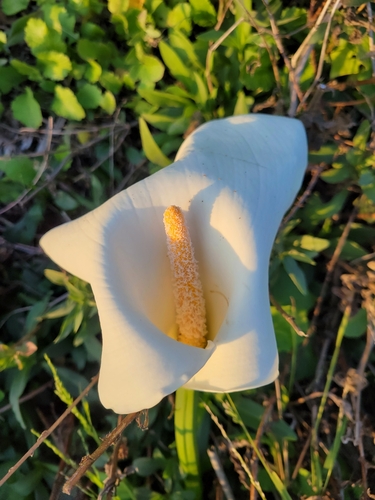VISIT the NATURAL WORLD
VISIT the NATURAL WORLD


MONOCOTS
Monocots, also known as Monocotyledons, are one of the two groups of flowering plants. These plants have one embryonic leaf, usually parallel-veined leaves and floral organs arranged in multiples of three.
LILIOPSIDA
latin name
5.200+
species in South Africa
70.000
species worldwide
6
critically endangered
13
endangered
29
vulnerable
9
near threatened
398
least concern
Monocots are a large class of flowering plants, characterized by their single embryonic leaf, which sets them apart from their dicot (two embryonic leaves) counterparts. A very large portion of this class is covered by the two orders Poales (grasses, sedges, cattails and allies) and Asparagales (agaves, orchids, irises and allies).

One of the defining plant families of Fynbos is the Restios (Restionaceae). They have green photosynthetic stems, leaves that have been reduced to sheaths and very small flowers. By far, the vast majority of these species can be found in the Cape Floral Kingdom.

With a plethora of herbivores and big grazers in the country, there needs to be a lot of food for them to graze on. One of those food sources is grass and South Africa has a lot of them, space and species-wise. A large part of the country is covered by the Grassland and Savanna biomes in which grass is found or is even the dominant vegetation. Although there is only one family that can call itself grass (Poaceae), commonly speaking the families of rushes and sedges are also referred to as grass. When combining these families, South Africa has some 800 different (observed) species.

Some noteworthy species within this class are the Candelabra Aloe, Quiver Tree, Poison-Bulb, Candelabra Lily, Granny Kappie, Flame Lily and the Strelitzias.

Calla Lily
Zantedeschia aethiopica

Reclining Date Palm
Phoenix reclinata

Belladonna Lily
Amaryllis belladonna

Eastern Candelabra
Brunsvigia radulosa

Whirlwind Tamarak
Albuca concordiana

Mokobulan African Hyacinth
Ledebouria mokobulanensis

Cape Aloe
Aloe ferox

Bumpy Astroloba
Astroloba corrugata

Three-ribbed Arrowgrass
Triglochin striata

Bell Agapanthus
Agapanthus campanulatus

Poison-bulb
Boophone disticha

Stripe Candelabra
Brunsvigia striata

Montane Pineapple Lily
Eucomis montana

Blue Squill
Merwilla plumbea

Mountain Aloe
Aloe marlothii

Balloon Haworthia
Haworthia transiens

Mkambati Palm
Jubaeopsis caffra

Drooping Agapanthus
Agapanthus inapertus

Candelabra Lily
Brunsvigia orientalis

Spotted Bloodlily
Haemanthus coccineus

Cape Cowslip
Lachenalia aloides

Candelabra Aloe
Aloe arborescens

Lebombo Aloe
Aloe spicata
